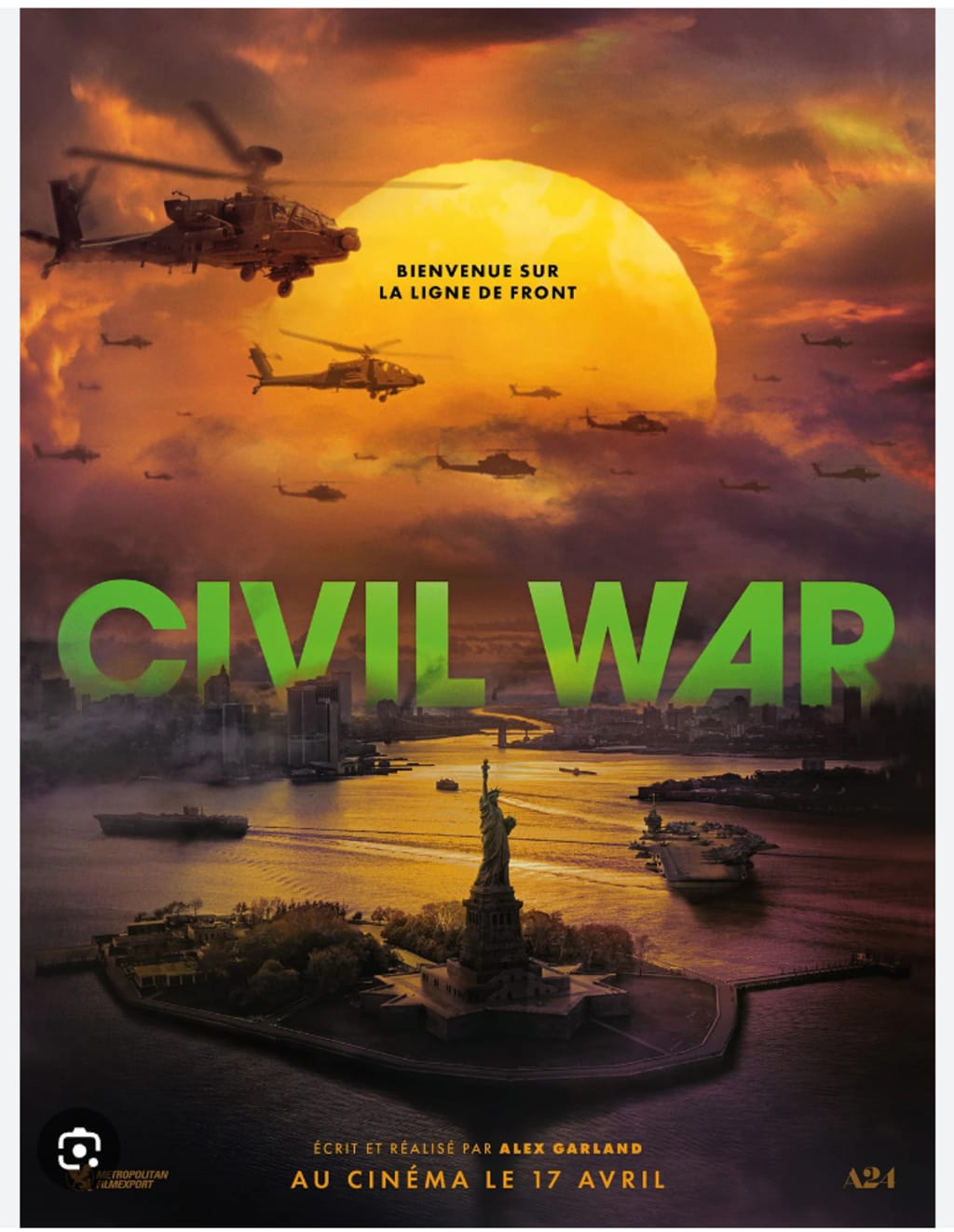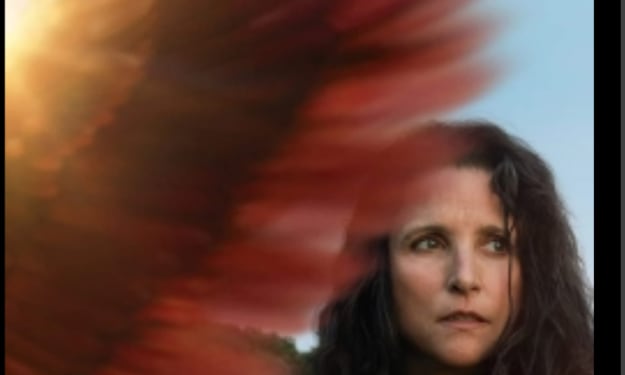
Title: "Civil War"
"Civil War," a film that has sparked profound discussions and divergent opinions, delves into a chilling portrayal of a future America torn apart by internal conflict. Directed by a writer who deliberately leaves key details vague, the movie invites viewers to contemplate the harrowing implications of such a scenario. This review explores the film's thematic depth, its impact on different audiences, and the broader societal questions it raises.
Introduction: A Film of Divergent Reactions
"Civil War" is not just a film; it's a catalyst for thought. Its portrayal of a fractured America gripped by internal strife has evoked strong reactions from audiences across various backgrounds. From a former journalist and psychotherapist intrigued by its depiction of societal breakdown to a retired US Marine skeptical about its military realism, the film has sparked conversations about the fragility of societal unity and the potential consequences of division.
Setting the Stage: Synopsis and Initial Impressions
The film opens with a bleak landscape—a once-thriving American city now reduced to rubble and chaos. Miles of abandoned cars clog highways, symbolizing an abrupt halt to normalcy. In makeshift tent cities, children play amidst the harsh realities of war, while rooftop snipers lurk in seemingly ordinary towns. These haunting images immediately set the tone for what unfolds—a nation torn apart, where lawlessness reigns and humanity struggles to survive.
For the protagonist, a journalist haunted by memories of a more trustworthy media, these scenes are gut-wrenching yet unsurprising. They paint a picture of a world where journalistic integrity has given way to sensationalism and bias. Meanwhile, her fiance, a seasoned Marine with a penchant for military strategy, is critical of the film's lack of backstory and clear delineation of opposing factions. He finds himself questioning the plausibility of certain scenarios while grappling with the broader implications of unchecked conflict.
Thmes Explored: Reflections on Society and Conflict
At its core, "Civil War" forces viewers to confront uncomfortable truths about societal breakdown and the consequences of unchecked division. It raises poignant questions about the resilience of democracy, the role of media in shaping public perception, and the ethical dilemmas faced in times of crisis. By intentionally leaving out specifics about how the war began or who the protagonists truly are, the film encourages viewers to project their own fears and hopes onto the narrative canvas.
The juxtaposition of ordinary scenes with scenes of brutality serves as a stark reminder of how quickly societal norms can unravel under duress. It challenges viewers to consider the fragility of social cohesion and the ease with which collective trust can be shattered. Each character, whether a desperate survivor or a disillusioned former soldier, embodies different facets of human resilience and vulnerability amidst chaos.
Character Dynamics: Personal Journeys Amidst Collective Struggle
Central to "Civil War" are its characters—each navigating their own path through the maelstrom of conflict. The journalist, grappling with memories of a more idealistic era in journalism, serves as a poignant reflection of societal disillusionment. Her journey from reporting on local news to documenting the horrors of war mirrors a broader narrative of lost innocence and hardened truths.
Conversely, her fiance, the pragmatic Marine, represents a voice of skepticism and pragmatism. His insistence on understanding military tactics and the geopolitical landscape speaks to a deeper concern about the plausibility of the film's premise. Yet, even he cannot deny the emotional impact of witnessing societal collapse and the moral dilemmas it presents.
Political and Societal Commentary: A Mirror to Contemporary Issues
Beyond its narrative elements, "Civil War" acts as a mirror to contemporary political and societal issues. It draws parallels to real-world tensions over political polarization, racial injustice, and the erosion of trust in institutions. The film's intentional vagueness about the origins of conflict invites viewers to reflect on their own perceptions of division and the ethical responsibilities of citizens in turbulent times.
The portrayal of factionalism within America—symbolized by the uneasy alliance between Texas and California—raises provocative questions about the nature of alliances and the fluidity of ideological divides. It challenges viewers to reconsider assumptions about unity and identity in an increasingly fragmented world.
Cinematic Craftsmanship: Visuals and Narrative Technique
Visually, "Civil War" is a testament to meticulous craftsmanship. Its bleak cinematography captures the desolation of war-torn landscapes, contrasting moments of tranquility with sudden bursts of violence. The use of sound, from eerie silences to thunderous gunfire, enhances the film's atmosphere of impending doom.
Narratively, the film's non-linear structure and sparse dialogue allow scenes to unfold with a haunting sense of inevitability. Each moment, whether quiet contemplation or frenzied combat, contributes to a narrative tapestry that challenges and provokes.
Audience Reception and Impact: A Film that Prompts Dialogue
The diverse reactions to "Civil War" underscore its power to provoke dialogue and introspection. For younger viewers, the film's portrayal of a divided America resonates with concerns about the future and the specter of societal collapse. Older audiences, recalling different eras of conflict and societal change, find themselves grappling with the film's thematic resonance with contemporary political realities.
Conversations sparked by the film extend beyond theaters and into homes, classrooms, and online forums. They delve into the ethical implications of media representation, the fragility of democratic norms, and the enduring legacy of societal trauma. In an era marked by division and uncertainty, "Civil War" serves as a cautionary tale and a call to action for viewers to engage critically with the complexities of modern society.
Conclusion: The Power of Provocation and Reflection
In conclusion, "Civil War" transcends its role as a mere film to become a catalyst for thought and introspection. Through its evocative portrayal of societal fracture and moral ambiguity, it challenges viewers to confront uncomfortable truths about the nature of conflict and the resilience of human spirit. Its deliberate ambiguity invites interpretation and debate, ensuring that its impact lingers long after the credits roll.
Whether reflecting on the role of media in shaping public perception or contemplating the ethical dilemmas of wartime survival, "Civil War" prompts viewers to engage critically with the complexities of our times. It is a film that demands to be seen, discussed, and pondered—a testament to the enduring power of cinema to provoke thought and inspire change.
As we navigate an increasingly polarized world, "Civil War" stands as a poignant reminder of the dangers of division and the imperative of unity. It challenges us not only to reflect on the past but also to consider the future we wish to create—a future where dialogue and understanding prevail over discord and distrust
About the Creator
Enjoyed the story? Support the Creator.
Subscribe for free to receive all their stories in your feed. You could also pledge your support or give them a one-off tip, letting them know you appreciate their work.





Comments
There are no comments for this story
Be the first to respond and start the conversation.